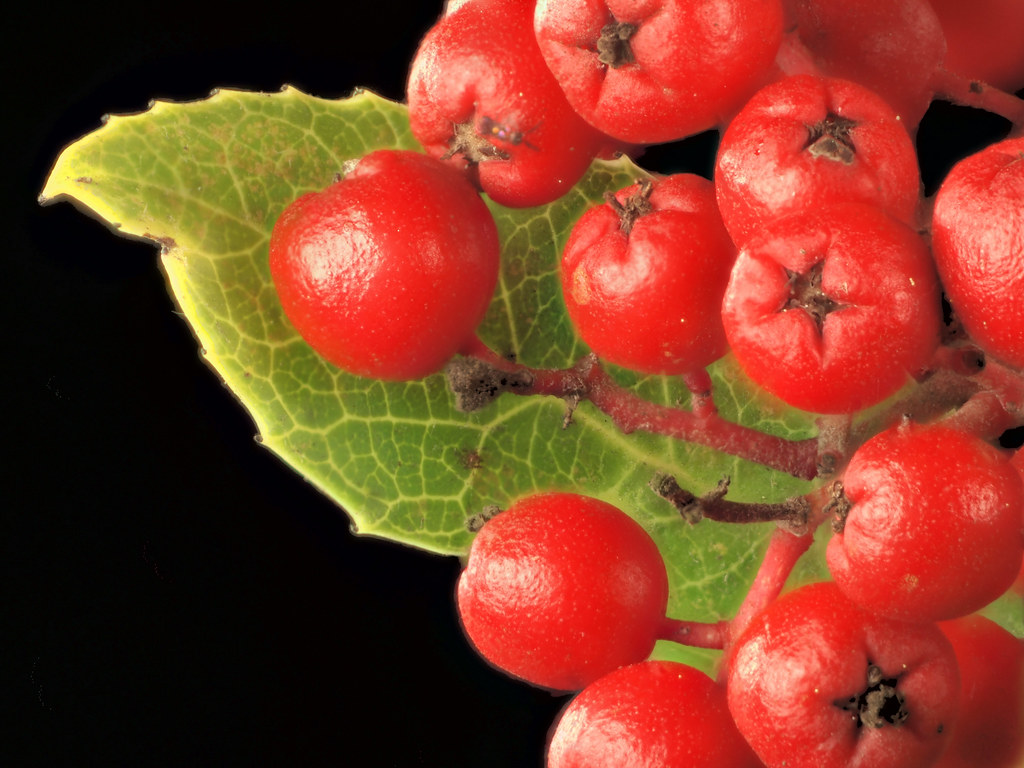#Heteromeles arbutifolia
Text

2 notes
·
View notes
Text
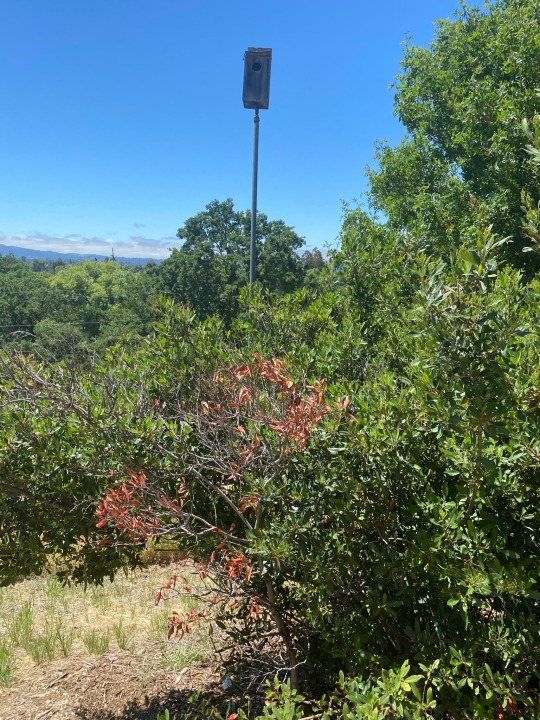


Toyon and Chrismas Berry. Heteromeles arbutifolia.
Needs some summer water - notice the dead branch in photo caused by lack of summer water during recent drought.
1 note
·
View note
Photo

Heteromeles arbutifolia. Now known as Toyon, used to be known as Christmas Berry. It was used in Christmas wreathes by modern settlers in Los Angeles due to its similarity to Holly.
5 notes
·
View notes
Text
The Oak King, Green God of Agriculture, Spring & Summer, Light & Day, Fair Weather - Quercus agrifolia
The Holly King, Red God of Pastoralism, Autumn & Winter, Dark & Night, Fowl Weather - Heteromeles arbutifolia
#Californian witchcraft#oak king holly king#holly king#oak king#toyon#coast live oak#tradcraft#eiochaidh
0 notes
Text
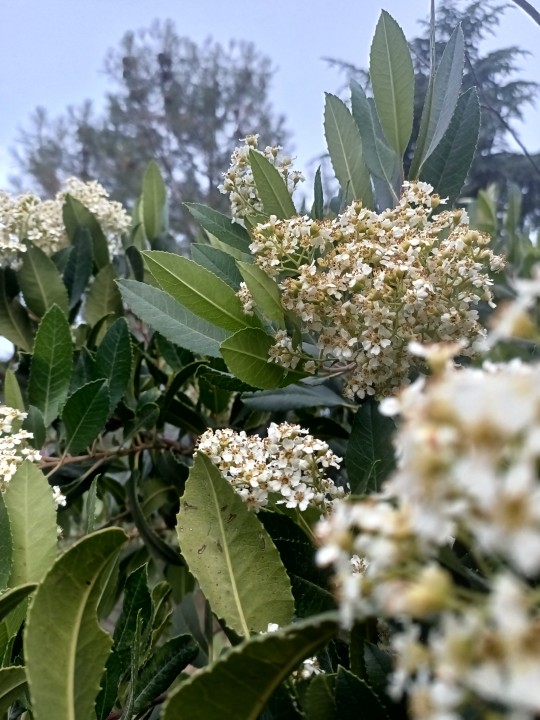
Hi to my favorite local rosids 👋 Heteromeles arbutifolia
1 note
·
View note
Photo

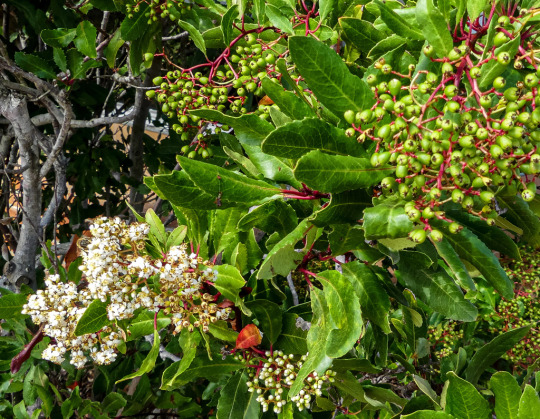
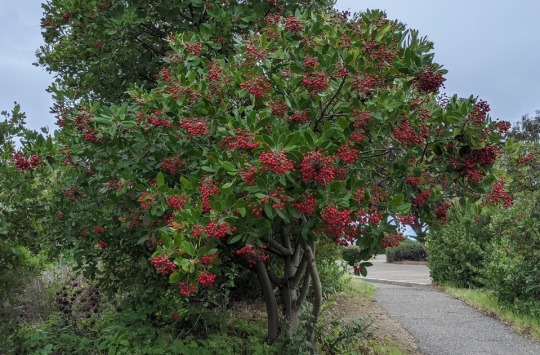

ashuwet · heteromeles arbutifolia · toyon · tollón
Ashuwet is an evergreen shrub/tree that normally grows to 6-15 feet, but can grow up to 30 feet in shady conditions. It is a major component of the coastal sage scrub plant community. Its leaves are a sharply toothed dark green and about 1.5 wide by 4 inches long. It produces bountiful white flowers which flower in June, and over the summer and fall ripen into bright red small berries. These vibrant berries mature in the fall and persist deep into winter when they start drying out. They are a very popular food source for birds and squirrels.
Ashuwet berries can be eaten, often made into a jam. The plant has many medicinal uses, mainly as a pain reliever and also for gynecological issues. Teas made from the flowers were used to help with period pain. Additionally, ashuwet berries were historically used as a treatment for dementia, and recent in vitro studies have shown promising compounds for treatment of Alzheimer’s.
0 notes
Photo
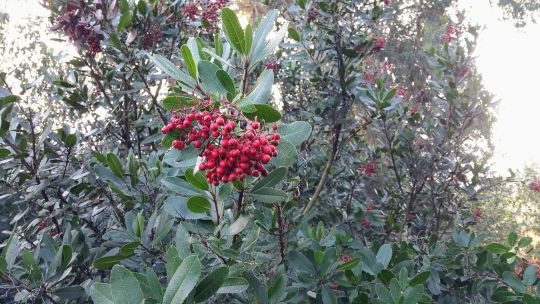
A new snapshot from https://sagesacre.com/2019/11/09/photo-of-the-day-toyon-christmas-berry/
Photo of the Day: Toyon - Christmas Berry

Toyon (Heteromeles arbutifolia), aka “Christmas Berry” or California Holly, is a native tree and favorite hangout for all sorts of birds and wildlife. Once established, it pretty much tolerates anything — blazing sun, drought, fire, shade, lousy soil, mule deer, etc.
This tree is over 30 years old and easily 20 ft tall. Most of the year, it has deep green, densely packed leaves that make it a good screening plant and offers cover for birds. Late summer it blooms with white flowers which give way to clusters of these red berries in the winter. It’s the green/red combination in winter that gives it the nicknames “Christmas Berry” or “California Holly.” (Hollywood was named for the tree which grows on the hillsides in the Los Angeles mountains.)
Birds will eat the berries, but humans shouldn’t. Not only do they taste nasty but they also contain cyanide compounds which can make you sick if you eat enough.
0 notes
Photo


More pages from my January 2017 sketchbook at Stebbins Cold Canyon, seventeen months after the Wragg Fire.
#fire cycle#fire ecology#fire recovery#ecoreportage#Natural Science Illustration#botanical illustration#sciart#gray pine#pinus sabiniana#foothill mule-ears#wyethia helenoides#toyon#heteromeles arbutifolia#oak gall#stebbins cold canyon#UC Natural Reserve
54 notes
·
View notes
Video
2014-11-15-15.52.59 ZS PMax Heteromeles arbutifolia-1 by John Rusk
Via Flickr:
Heteromeles arbutifolia—Christmas berry. Christmas berry is important as one of the first California plants to gain legal protection. It was subject of a 1920s law aimed at reining in the unrestricted overharvesting of berry-bearing branches during Christmas season. Willis L. Jepson, showing the prejudices of his time, wrote in the _Flora of California_, "In the years of 1911 and 1912 and thereabouts most of the stock for the San Francisco Market came from the region of Tuolumne County. With proper care of the shrubs the quality of the berries as a rule improves as a result of harvest pruning, but the Tuolumne region was so ill-treated by the Italian gatherers that the district ceased for some years to be a source of supply." The plant is in a private garden in Berkeley, CA.
#Olympus Pen E-PL1 Body#Canon FD 100 mm Macro Lens#Stack of 16 images#Zerene Stacker#taxonomy:kingdom=Plantae#Plantae#taxonomy:superphylum=Tracheophyta#Tracheophyta#taxonomy:phylum=Magnoliophyta#Magnoliophyta#taxonomy:class=Magnoliopsida#Magnoliopsida#taxonomy:order=Rosales#Rosales#taxonomy:family=Rosaceae#Rosaceae#taxonomy:genus=Heteromeles#Heteromeles#taxonomy:species=arbutifolia#taxonomy:binomial=Heteromeles arbutifolia#Heteromeles arbutifolia#Toyon#ashwet#Christmas Berry#California Holly#taxonomy:common=Toyon#taxonomy:common=ashwet#taxonomy:common=Christmas Berry#taxonomy:common=California Holly
1 note
·
View note
Text

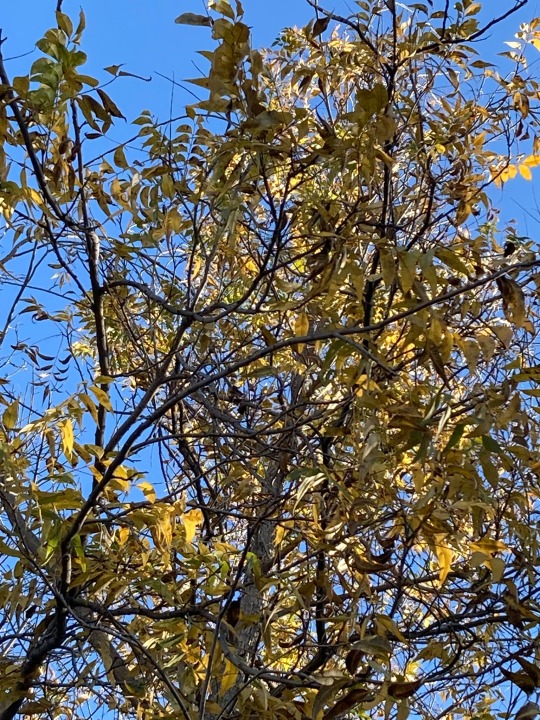


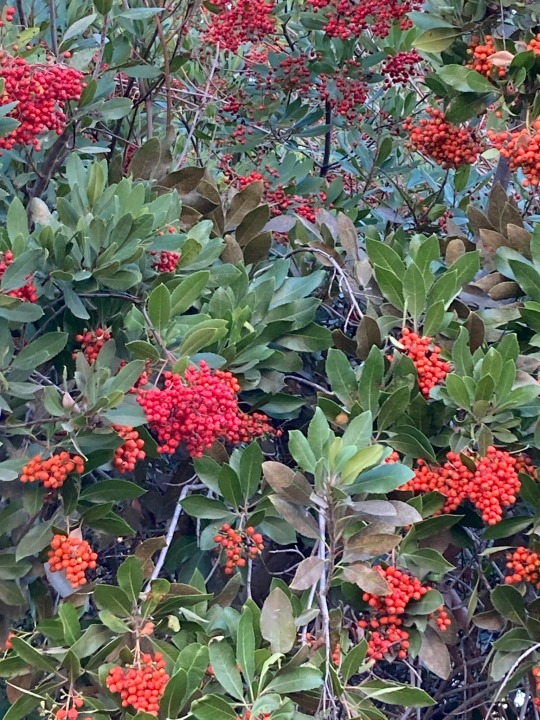
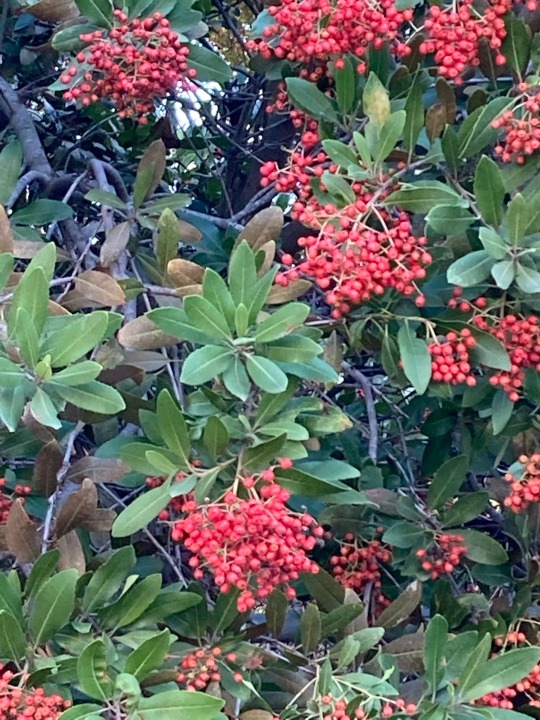
#chinese golden rain tree#koelreuteria paniculata#toyon#heteromeles arbutifolia#red berries#sunlight through leaves#hillside#griffith park
2 notes
·
View notes
Text

Leaves - Dark green Coast Live Oak (Quercus agrifolia) and serrated edge Toyon (Heteromeles arbutifolia) #lookpastthewildflowers
#nature#concretechaparral#california#losangeles#nativeplants#wildflowers#keepcalifornialookinglikecalifornia#native plants#chaparral#coastalsagescrub#keepcalookinglikeca#kenneth hahn state recreation area#toyon#coastalliveoak#lookpastthewildflowers#canativeplants
1 note
·
View note
Photo
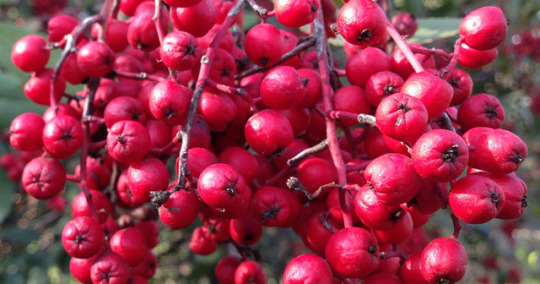
January 2, 2018 Toyon Heteromeles Montara small life details
#DailyGratitude#DailyMeditation#dailypic#gardenphotography#gratitude#montaralife#naturephotography#nofilter#takeaminute#takeamoment#Anne Strasser#annestrasser#CA Native Plant#Daily Surprise#garden#Heteromeles arbutifolia#Meditation#Nature#Photography#screensaver#Toyon
0 notes
Photo

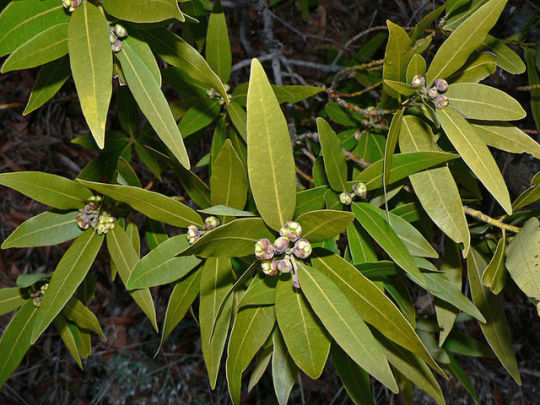
Are Packrats Fumigating Their Homes Using Plants?
by Matt (In Defense of Plants Blog/Podcast)
Any organism that lives in one place for a long enough time is going to have to deal with pests. For mammals, this often means fleas and ticks. Nests, dens, and other roosting spots tend to accumulate high numbers of these blood suckers the longer they are in use. As such, anything that can cut down on pest loads in and around the home has the potential to confer great advantages.
Evidence from California suggests that wood rats may be using the leaves of a shrub to do just that...
Dusky-footed wood rats (A.K.A. packrats) build giant nests out of twigs and other plant debris. These nests serve to protect packrats from both the elements and hungry predators. Packrat nests can last for quite a long time and reach monumental proportions considering the size of the rat itself. Because they use these stick nests for long periods of time, it should come as no surprise that they can build up quite a pest load. Fleas are especially problematic for these rodents.
When researchers took a closer look at what packrats were bringing into their nests, they realized that not all plant material was treated equally. Whereas packrats actively collect and feed on leaves from various oaks (Quercus spp.), conifers (Pinus spp., Juniperus spp., etc.), and toyon (Heteromeles arbutifolia), the packrats seemed to have a special affinity for the leaves of the California bay (Umbellularia californica).
However, instead of taking huge bites out of bay leaves, the rats appear to nibble them along the margin and spread them throughout their nest. What’s more, fresh bay leaves are brought in every few days...
Read more: In Defense of Plants
Photos: Public Domain and Walter Siegmund CC
#rat#packrat#rodent#animals#animal behavior#california#nature#trees#plants#botany#north america#biology
31 notes
·
View notes
Photo
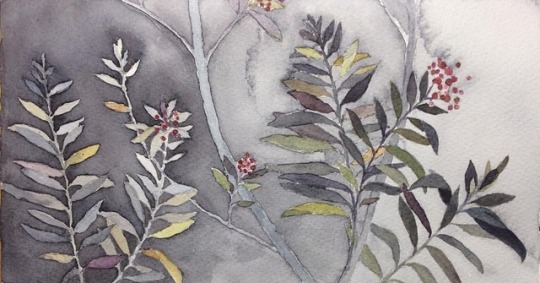
Heteromeles arbutifolia, aka Toyon or Christmas berry; a study in greys #watercolorpainting #watercolor #watercolour #acuarela #akvarell #toyon #heteromelesarbutifolia #californianativeplants https://www.instagram.com/p/BqGcix0A9t_/?utm_source=ig_tumblr_share&igshid=vlcry7n17ldq
#watercolorpainting#watercolor#watercolour#acuarela#akvarell#toyon#heteromelesarbutifolia#californianativeplants
1 note
·
View note
Photo
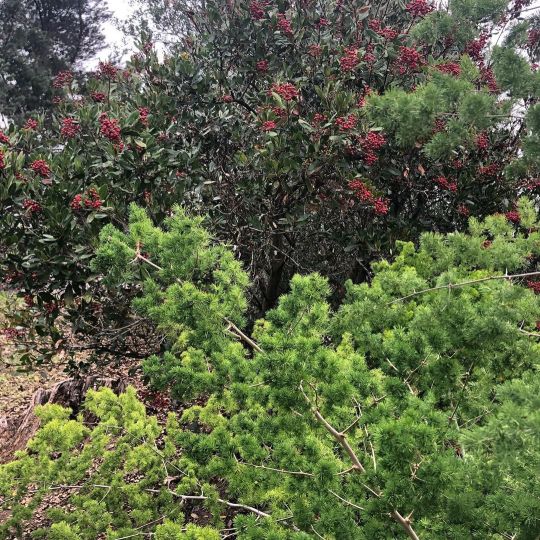
Our Asparagus retrofractus is enjoying it's new location beneath the toyon (Heteromeles arbutifolia). One of our neighbors chickens is also enjoying a brief evening roost in the toyon! https://www.instagram.com/p/CXCYP3Uv1dG/?utm_medium=tumblr
0 notes
Text
Bring in clippings of winter greens such as juniper (Juniperus spp. and cvs., Zones 2–10), toyon (Heteromeles arbutifolia, Zones 7–10), and pine (Pinus spp. and cvs., Zones 2–9) to celebrate […] The post Southern California: December Garden To-Do List appeared first on FineGardening.

Bring in clippings of winter greens such as juniper (Juniperus spp. and cvs., Zones 2–10), toyon (Heteromeles arbutifolia, Zones 7–10), and pine (Pinus spp. and cvs., Zones 2–9) to celebrate […] The post Southern California: December Garden To-Do List appeared first on FineGardening.
via RSSMix.com Mix ID 8135640 https://ift.tt/33OpLZe
0 notes
